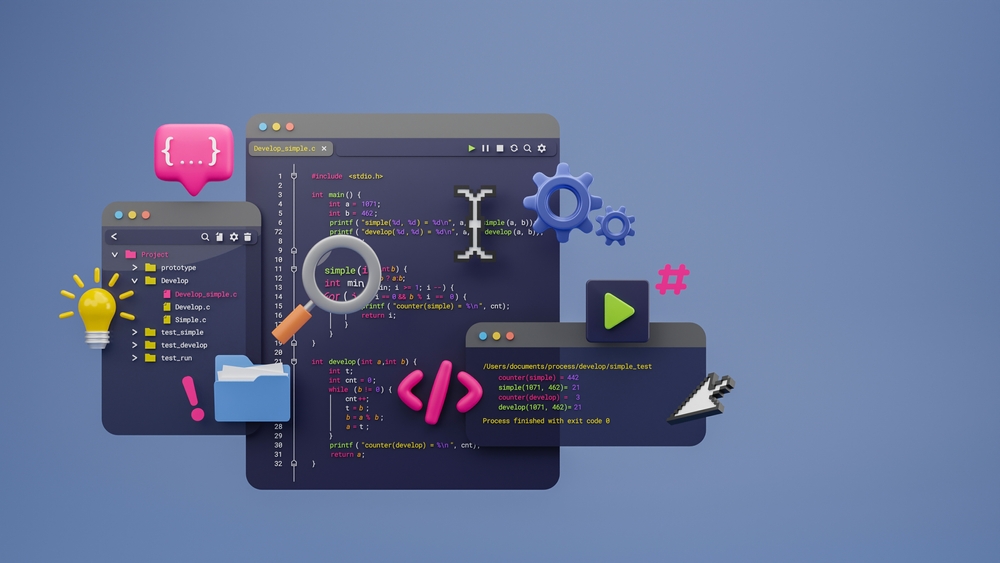What is Regression Testing? Tools and Types with Examples
The world of software programming and development is a fickle one. Apps may stop working, develop bugs or issues, and software can become unresponsive, even when everything was originally running fine.
Plus, to top it all off, the fix or update being pushed by the company may solve the issue their app had developed, but it might also cause a different problem to occur or later resurface! In the tech community and to the woe of many developers, this is known as ‘Regression.’ Where the functioning of the app may ‘regress’ to its former state, that is, work slowly and throw errors or not work at all.
And that is effectively why, regression testing has become a common and pretty important aspect of software development processes and how companies maintain and provide support for their applications, even after launching them.
Today, the main goal of checking for signs of regression focuses on usability testing. It involves running and then again, re-running functional tests on any software or application that has recently seen changes being made to it.
Consider the following as some regression testing examples: Imagine a website where you can convert documents from various formats, into PDF files but a bug starts preventing users from uploading a specific format of their documents.
When the developer gets around to fixing this bug, they must spend time regression testing so that no other aspect of the website gets affected by this fix.
Even more, they must also then test all the other parts operating on their website, to make sure that that particular code or fix works as intended, along with the existing features or functions. Hence:
- Detecting problems that might have risen during the time this fix was applied, altering the code, or when the latest features were added to the app.
- Maintaining stability by analyzing plus correcting the part of the app which was impacted by the fix, so that it works normally and seamlessly for the users.
- Minimizing the capital and workload invested by a company in addressing the problems that cropped up and started to affect the applications pretty early.
As the landscape for software development has shifted or evolved, checking for problems and relying on a QA testing service has been vital in keeping the integrity of apps in check.
And there are no one-size-fits-all approaches when it comes to maintaining apps, but instead, different regression testing types that aid developers in their software projects.
Exploring the Different Types of Regression Testing
Various approaches can typically be seen when it comes to regression testing any software based on factors such as time constraints, the resources available to the company or developers, and the changes to be implemented. Several types, with each serving an important purpose that plays a specific part in the app’s quality. For instance:
1. Retest All:
This approach tests the whole software or program thoroughly. It doesn't matter which specific parts were changed; it covers everything. It's awesome for doing a complete check of how well things work, but it does require a lot of resources and time. So, it's best suited for functional testing, in really important systems or small applications.
2. Selective Regression Testing:
Selective testing is like zooming in on a specific part of an app. It's called "selective" because you choose where to focus your attention in that software and its operations. This is super helpful because it saves time and effort.
Instead of going through the whole app to find issues, you can concentrate on the areas that are likely to be affected by the changes you're making. So, it's a smart way for companies to test their app without getting overwhelmed.
3. Corrective Testing:
This method is usually used to take care of the application and make sure everything is running smoothly. Developers run test cases under this approach even when they haven't made any changes to the software.
One example of this is automation testing, where certain parts of the application are really important and need to be checked thoroughly, even when they are not doing the usual update-and-check routine.
4. Progressive Regression Testing:
In stuff like game testing and other software projects, there's this approach to analyzing apps during the development process, called progressive regression testing. Basically, instead of testing everything all at once, you test the updates bit by bit as they come out.
You start with the new or changed stuff, test that first, and then move on to the old stuff. It's a way to catch and fix problems early on in the development process, and you can do it more often if you need to.
Whether a software developer is retesting their entire application, analyzing particular areas of their project, like in virtual reality testing, or conducting tests in little increments, it’s apparent how these approaches are integral to catching regressions and overall maintenance.
They ensure the software’s quality and help companies develop and deliver reliable applications to their users and target audience.
Related post: A Guide to Progressive Web Apps
Top Regression Testing Tools Streamlining Software Quality Assurance
So, now that we've covered the basics of what regression testing is and how it relates to creating software, and the quality of the apps in how they will function or operate, let's talk about the tools that are usually used for these tests.
There are a bunch of tools that people commonly use for regression testing, and here are a few examples:
1. Test Automation:
Test automation tools are like magical helpers for software developers. They make running test cases a breeze, making sure everything works smoothly and saving tons of time. These tools can even record and run test scripts based on what customers want, and then compare the results with what was expected.
Some cool test automation tools you might have heard of are Selenium, TestComplete, and HP UFT (Unified Functional Testing). They're like superheroes for testing software!
2. Performance Testing:
When you're checking for problems or bugs in software, like when you're checking for blockchain testing or other apps, it's crucial to see how well the software performs after making changes to it. There are tools like LoadRunner, Apache JMeter, and Gatling that can help with this kind of performance testing.
They simulate what would happen when lots of users are using the software, putting it under stress to see if there are any issues or bottlenecks that affect its performance. These tools are great for spotting any specific performance problems that might crop up in different apps.
3. Version Control Systems:
Git, Subversion (SVN), and Mercurial are not exactly fancy testing tools, but they're super important for keeping track of code changes and making sure different versions of software can be easily compared.
With these systems, developers can undo changes they don't like, create separate sections for different features, and work together with their team members. They make coding a lot smoother and teamwork a breeze!
4. Test Management:
When it comes to testing software, it's essential to have a well-structured approach, especially for regression testing. Whether you're dealing with multiple applications or just one, using test management tools can be helpful.
These tools provide a centralized platform where developers can easily manage and organize their test cases. Some popular examples of such tools are Jira, Zephyr, and TestRail. They make it easier to keep track of your regression testing and ensure everything is running smoothly.
So, these are some of the tools that people usually use for regression testing. Picking the right tool for your project depends on a bunch of things. Things like where you're going to build your app, what programming languages you're going to use, how much time and money you have, and what your project needs.
There are no strict regression testing definitions or rules for the test cases that software developers have to follow. They can look at different types of testing and software and decide what works best for them and helps them make their application or aid their software development process.






